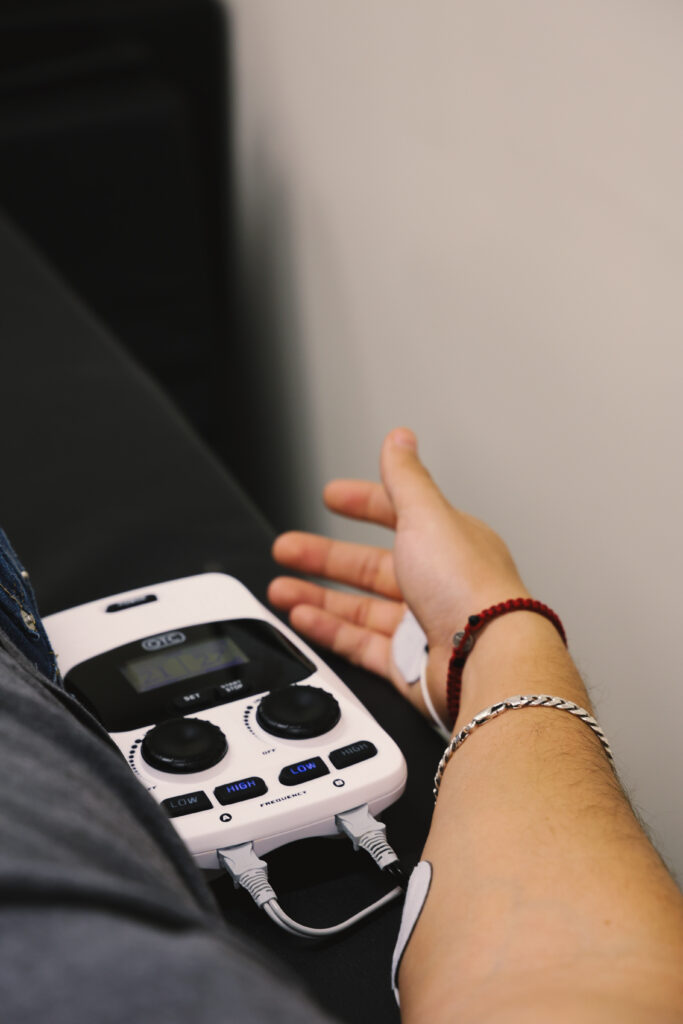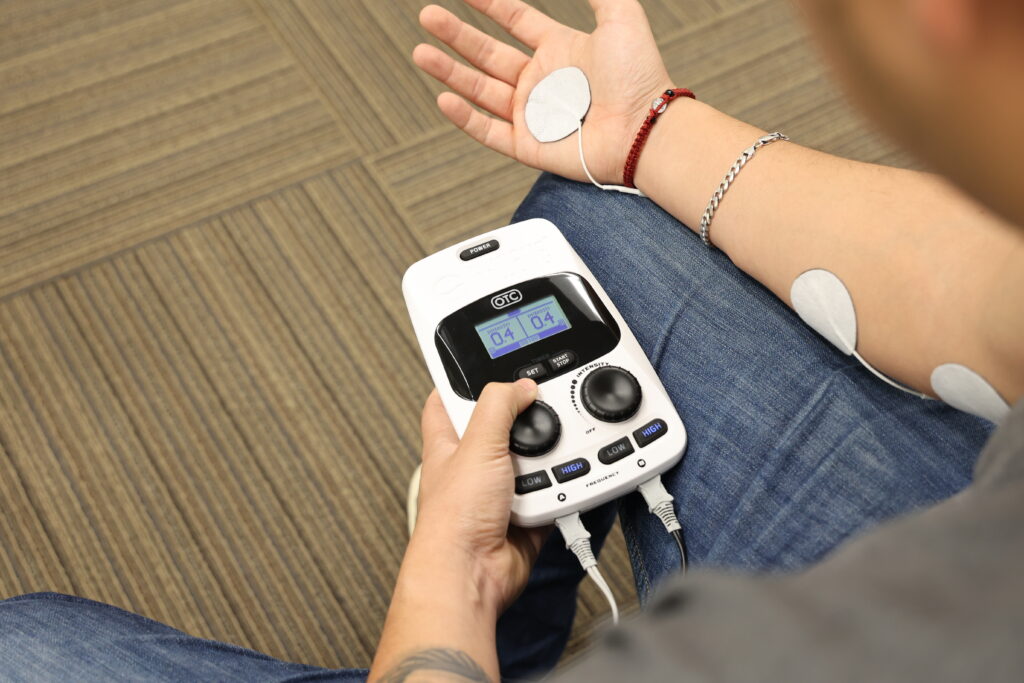How H-Wave Provides Effective Pain Management for Hand Injuries
When recovering from wrist or hand injuries, one of the biggest challenges is managing pain and reducing inflammation. Whether you’re dealing with a broken finger, sprained wrist, or post-surgery complications, finding effective pain management solutions that don’t rely on opioids can be difficult. That’s where H-Wave comes in. Dr. Kelly Starrett, a renowned physical therapist, advocates for H-Wave as an exceptional tool for alleviating pain and enhancing recovery by addressing two critical factors: immediate pain relief and efficient decongestion of swollen tissues.
Why Hand Injuries Are So Painful
The hands and wrists are densely packed with sensory nerves, making them highly sensitive to pain and swelling. When an injury occurs, the body responds by sending an influx of fluids to the site, leading to congestion and increased pressure on the surrounding tissues. This can create extreme discomfort and restrict normal hand movements, slowing down recovery. As Dr. Starrett explains, “Swelling in this small space is very sensitizing to the brain,” making any inflammation in the wrist or fingers a particularly intense experience.
H-Wave, however, offers a unique, non-pharmacological way to tackle this issue. By using a combination of low and high-frequency settings, it targets both pain relief and tissue decongestion. This dual approach is critical for patients who want to avoid narcotics or opioids for managing their pain.
How H-Wave Provides On-Demand Pain Relief
When experiencing acute pain in the wrist, H-Wave’s high-frequency setting is a powerful way to achieve immediate relief. Dr. Starrett explains that this setting fatigues out some of the normal features of the body, leading to hours of ongoing pain relief even after a short treatment session. To use this setting effectively:
- Place the pads on either side of the injured area, such as around the wrist or hand.
- Adjust the intensity until a light buzzing sensation is felt—enough to feel comfortable but not to cause muscle contractions.
- Treat for about an hour, and the pain should diminish significantly.
The high-frequency setting is perfect for patients who need a temporary break from constant pain, providing relief without disrupting healing processes. Whether you’re dealing with post-surgery pain or a sprained finger, using H-Wave can help you get through your day without relying on medications.
Enhancing Recovery with Low-Frequency Decongestion
Pain relief is only one part of the equation. Managing inflammation and congestion in the wrist is crucial to reducing recovery time and improving outcomes. Dr. Starrett notes that the hand and wrist are always in a “gravity well,” meaning fluid naturally pools inflammatory markers to the site, resulting in swelling and congestion. This inflammation, in turn, creates pressure in the small spaces of the hand, causing intense pain and discomfort. As Dr. Starrett points out, even a small amount of swelling in the wrist or fingers can be highly sensitizing to the nervous system.
For individuals recovering from surgery or dealing with chronic pain, reducing this congestion is crucial to improving comfort and speeding up the healing process. Traditional pain management methods like rest and elevation may not be sufficient to address this issue. However, with the right approach—such as using H-Wave to tackle both pain and swelling—the recovery process can be significantly enhanced.
How to Use H-Wave for a Hand Injury: A Practical Guide
High-Frequency Application for Pain Relief:
- Place the electrodes on either side of the wrist or the affected area.
- Set the device to high frequency until a mild buzzing sensation is felt.
- Use for up to an hour, taking breaks as needed.
Low-Frequency Application for Decongestion:
- Place one electrode on the palm of the hand and the other on the forearm.
- Set the device to low frequency until you feel gentle muscle contractions.
- Focus on creating pumping action without causing pain or discomfort.
- Use for 1-2 hours at a time, up to 3 times a day for best results.
Why Choose H-Wave Over Other Devices?
Unlike other electrical stimulation devices like TENS units, H-Wave offers a unique approach that addresses both pain relief and decongestion. While TENS devices primarily block pain signals, H-Wave goes a step further by actively promoting circulation and fluid movement. This dual-action capability makes H-Wave particularly beneficial for wrist injuries, where small amounts of swelling can lead to significant pain and functional limitations.
Who Can Benefit from H-Wave for Hand Injuries?
H-Wave is ideal for individuals experiencing:
- Chronic pain from repetitive wrist strain (e.g., athletes, musicians, office workers)
- Post-surgery recovery to reduce swelling and improve mobility
- Acute injuries such as sprained wrists or broken fingers
- General pain management without the use of opioids or other painkillers
By incorporating H-Wave into your rehabilitation routine, you can accelerate your recovery, reduce pain, and regain function faster—all while minimizing reliance on pharmaceutical interventions.
Key Benefits of Using H-Wave for Hand Injuries
- On-Demand Pain Relief: Provides immediate pain relief without the need for medications.
- Improved Circulation: Reduces swelling and enhances blood flow to the affected area.
- Safe for Sensitive Injuries: Gentle stimulation that won’t strain or exacerbate injuries.
- Versatile Application: Can be used for a variety of wrist, hand, and finger injuries.
- Non-Opioid Alternative: Ideal for those looking to avoid pharmaceutical pain management.
Getting Back to What You Love
Whether you’re an athlete looking to return to training or someone simply seeking to manage chronic pain, H-Wave offers a versatile and effective solution for hand injuries. By addressing both pain and congestion, H-Wave can help you regain function, reduce discomfort, and get back to doing what you love—faster and without the use of opioids.
If you’re dealing with a wrist injury or looking for a comprehensive pain management solution, consider incorporating H-Wave into your recovery routine. Talk to your healthcare provider to see if H-Wave is the right fit for your rehabilitation plan and start taking control of your pain today.

